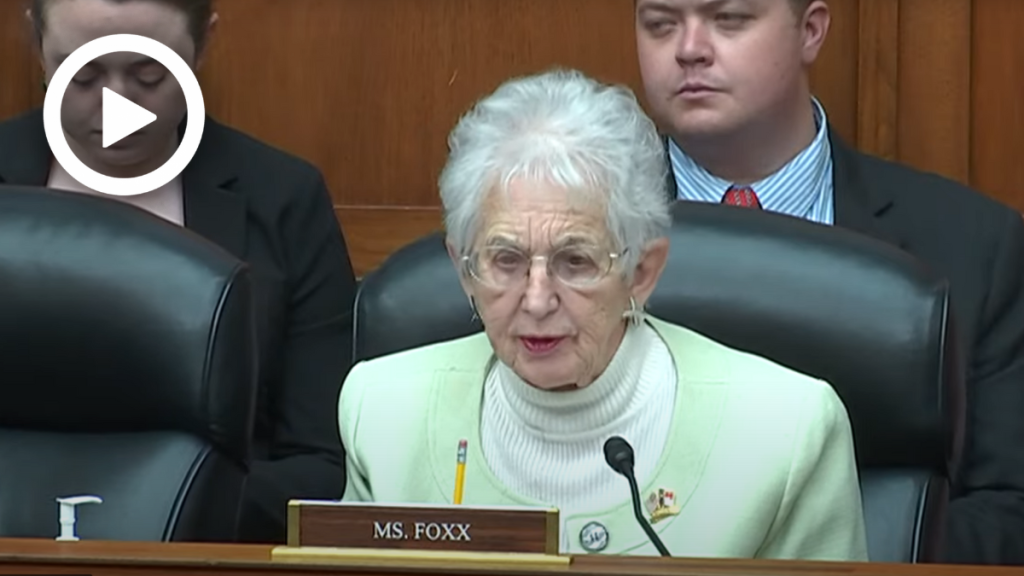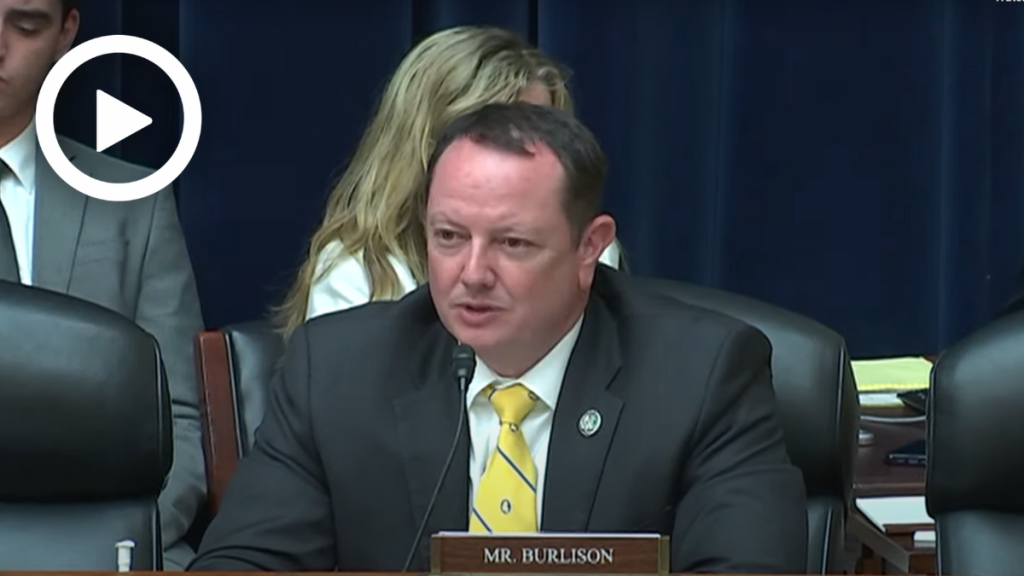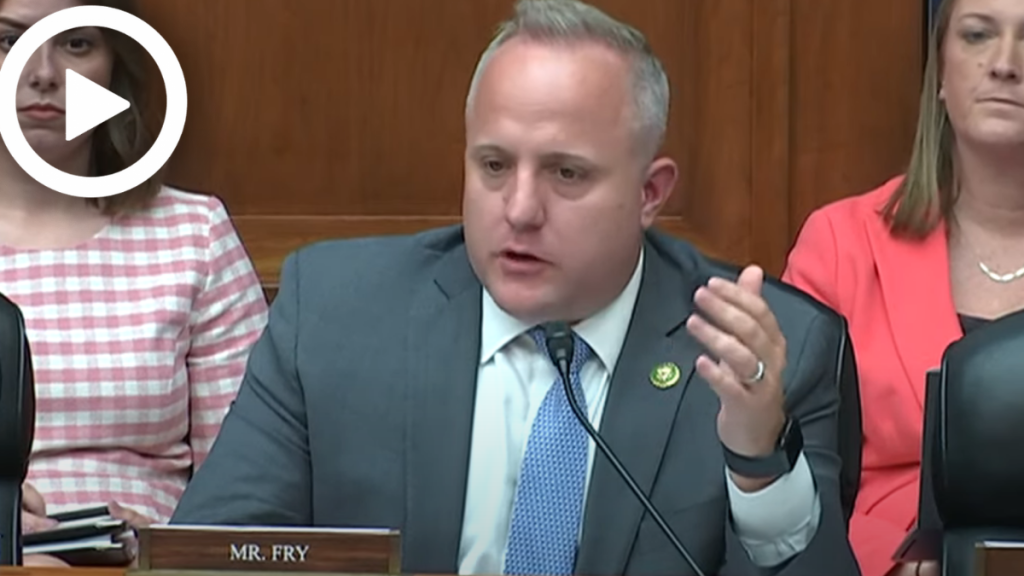Hearing Wrap Up: Silicon Valley Bank Collapse is a ‘Case of Failed Supervision’
WASHINGTON—Today, the House Subcommittee on Health Care and Financial Services Chairwoman Lisa McClain (R-Mich.) held a hearing titled “A Failure of Supervision: Bank Failures and the San Francisco Federal Reserve.” At the hearing, members asked questions about the San Francisco Federal Reserve’s failed supervision and misplaced priorities that enabled the collapse of Silicon Valley Bank.
Key Takeaways:
Record-high inflation brought on by the Biden Administration’s reckless spending sprees forced the Federal Reserve into a series of interest hikes that diminished the banks’ investment portfolios and ultimately led to Silicon Valley Bank’s (SVB) closure.
The Federal Reserve Bank of San Francisco (SF Fed) failed to supervise SVB and did not take sufficient steps to ensure the bank addressed vulnerabilities.
- During his opening testimony, Jeremy Newell, Senior Fellow at the Banking Policy Institute & Founder and Principal at Newell Law Office, PLLC, examined regulatory failures by the Fed: “The Fed report concludes that examiners didn’t fully appreciate SVB’s weaknesses and didn’t take sufficient steps to demand that they be fixed, but casts blame for those failures on decisions made by former Fed leaders that it alleges reduced standards, increased complexity, and promoted a less assertive supervisory approach. The underlying evidence suggests strongly that that’s the wrong diagnosis.
“Rather, that evidence paints a different picture, one in which supervisors were principally focused on the wrong issues, occupied with processes rather than material risks, and were plenty assertive – just not about the risks that proved to be SVB’s downfall.”
- Michael Clements, Director of Financial Markets and Community Investment at the U.S. Government Accountability Office, detailed failures in the examiner’s approach to supervising SVB during his opening testimony: “We found that the Fed did not adequately escalate its supervisory actions. The Federal Reserve was generally positive of SVB from 2018 through June 2022, rating SVB’s overall condition as satisfactory. Despite the [Matters Requiring Attention (MRAs)], the Fed assigned the highest ratings to SVB’s liquidity and second-highest ratings to its management.”
Members on both sides of the aisle agreed that federal bureaucrats failed to do their job to supervise Silicon Valley Bank, yet the Biden Administration has not held any actors accountable.
- “SVB is a case of failed supervision, not failed regulation,” Mr. Newell said during his testimony. “Taken together, the picture that we have today strongly suggest that the Fed’s supervision of SVB may reflect a larger culture of bank supervision that has increasingly lost its way and become distracted from its core mission of scrutinizing bank safety and soundness.”
Member Highlights
Subcommittee Chairwoman Lisa McClain (R-Mich.) demanded to know why San Francisco Fed regulators failed to escalate their concerns and intervene in the SVB collapse.
Rep. McClain: “Is there more the Fed could have done to prevent this failure from happening?”
Mr. Newell: “Certainly. […] One of the things I think that you see kind of consistently throughout the process, as I noted in my opening remarks again, is a focus on process and risk controls rather than actual risks.”
Mr. Clements added: “There needs to be more timely and forceful actions when problems arise. Having policies and processes are good, those are internal controls to prevent risk from arising, but once the risk has arisen, we need forceful action. We have recommended on multiple occasions that there be some kind of trigger mechanism.”
Rep. McClain also noted that while Democrats and the Federal Reserve tried to blame changes to the Dodd-Frank Act made in 2018 for the SF Fed’s actions, the SF Fed did not use the tools of discretionary authority at its disposal under Dodd-Frank.
Rep. McClain: “We technically didn’t take away any tools, am I understanding that correctly?”
Mr. Newell: “That’s exactly right.”
Rep. McClain: “The regulators had the same tools; they just chose not to use them and hide behind the Dodd-Frank rule. How about we just do the job that you’re getting paid to do.”
Rep. Virginia Foxx (R-N.C.) asked what changes can be made so that federal regulators focus on the right issues.
Rep. Foxx: “Is there anything that can be done to get regulators to stop focusing on process and start looking at deficiencies, noncompliance, and other risks in a bank’s operations, so we stop the failures that are occurring.”
Mr. Newell: “First and foremost, what would be useful here is a general more structural change to the way that the banking agencies, including the federal reserve, approach supervision.
“The need is clear for real structural reforms to the way that the Fed and other banking agencies do supervision.”
Rep. Foxx also pointed out that SVB didn’t have a Chief Risk Officer for eight months.
Rep. Foxx: “We know that SVB didn’t have a person to occupy the role of Chief Risk Officer for nearly eight months. Should SVB’s lack of CRO raise red flags?”
Clements: “We’re certainly aware that there was not a Chief Risk Officer for a period of time.”
Rep. Eric Burlison (R-Mo.) asked what messages from the SF Fed’s actions could be applied to other bank failures and to small banks across the United States.
Rep. Burlison: “Are there similarities between Silicon Valley and what happened at Signature Bank and at First Republic Bank?”
Mr. Clements: “We looked in detail at both SVB and Signature Bank. I think the problems were similar. In both instances, the regulators identified challenges, had MRIAs, MRAs, MRBAs in the case of FDIC at Signature Bank. The concern was just the escalation. When problems were not being resolved. Once a serious risk was identified, not taking enforcement action in a timely and forceful enough manner.”
Rep. Russell Fry (R-S.C.) inquired about ways to improve patterns of failed supervisory action.
Rep. Fry: “Would the existing regulatory framework benefit from real time monitoring of these issues?”
Mr. Newell: “Certainly more information and data is always better.”
Mr. Fry: “Throughout the years, has GAO observed a pattern of issues in supervisory action?”
Mr. Clements: “This pattern goes back to the Savings and Loan crisis in ’91 of the supervisors are good at identifying problems. There appears to be a problem of using the full suite of tools and especially the most forceful tools available to them.
CLICK HERE to watch the hearing.
Read More:
McClain: SF Fed Failed to Oversee Silicon Valley Bank Despite Clear Warning Signs
Comer, McClain Open Investigation into SF Fed’s Role in Silicon Valley Bank Collapse



